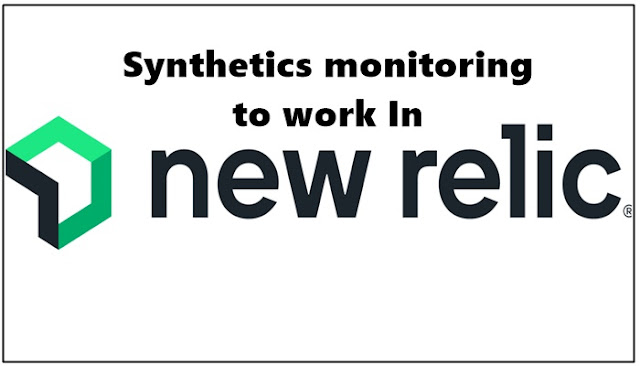One well-liked online software program called New Relic allows websites and applications to be monitored and their performance managed. New Relic offers a crucial function called synthetics monitoring to imitate user interactions and track the effectiveness of your web pages. You may learn a lot about the performance and accessibility of your web pages across various locations and gadgets using New Relic's synthetics monitoring. Here mentioned are the ways to get synthetic tracking to work in new relic:
Select a synthetic motor:
Depending on what you want to monitor, you have a variety of monitors to pick from. The most common type of monitoring includes removing, updating, and constructing synthetic monitors using API calls. Once chosen, go to one.newrelic.com, select the monitor type, and fill out the field. Then add this monitor. In addition to a runtime choice, you may also add periods and tags.
Summary page:
In the top-right corner of the summary page, click the name of your synthetic monitor to view its status. If an active incident resulted in an alert, click critical attention for this particular monitor to open in a new tab.
Select a type of monitor:
New Relic offers several monitor types, including Simple Browsers, Scripted Browsers, API Tests, and more. Choose a style based on what you need to monitor.
Set up the monitor in the right place:
Include all relevant information for the monitor, including the URL or endpoint to watch, the locations from which to run the monitor, the frequency of monitoring, and any other configurations unique to the sort of monitor you have chosen. According to your needs, alter the setup.
List the warning signs:
Establish the circumstances under which an alert should be sent. You can specify thresholds, for instance, for availability, response time, or certain content checks. Because of this, New Relic can alert you if the monitor picks up performance problems or failures.
Save and enable the monitor:
After setting up the alert and monitor conditions, save your settings. Then, turn on the monitor. The monitor must be enabled to function and begin watching your website or application.
Monitor results:
Tracking outcomes following activation of the monitor, New Relic will start performing the synthetic tests by the predetermined timetable. In the user interface of New Relic, you may view the outcomes and performance data. You can use this information to analyze your system's performance and availability.
Set up notification:
Configure the notification settings in New Relic to get information and alerts when issues are found. By doing this, you are guaranteed to be alerted for performance issues.
Fine-tune and optimize:
Using the information provided by New Relic, continuously evaluate the outcomes to determine.
Bottom line:
It is crucial to remember that the particular actions and choices may differ slightly based on the New Relic version you are using and the features offered by your subscription. Furthermore, New Relic provides thorough instructions and support materials to help you set up and use synthetics monitoring efficiently.

No comments:
Post a Comment